Follow the Nakasendo road from Sekigahara-juku to Tarui-juku. The road itself is a paved road with little variety, but it is dotted with historic sites that are unique to a highway with a long history.
Sekigahara-juku is no longer a post town, as the Nakasendo has become a modern national highway. But once through Sekigahara-juku, an elegant roadway continues.
Tarui is a little-known town, but it has an ancient history. Tarui is home to Nangu Taisha, one of the oldest shrines in Mino area of Gifu Prefecture.
Sekigahara-Tarui Course Highlights
Heading south from Sekigahara Station on the JR Tokaido Line, the starting point, you will immediately come to National Route 21. This is the former Nakasendo Sekigahara-juku. But now it is a busy and difficult road to walk on. As you walk along the sidewalk toward the east, you will see the words “Sekigahara Tamari” on the wall of an old private house-style house. This is Sekigahara Brewing Company, which literally makes tamari soy sauce.
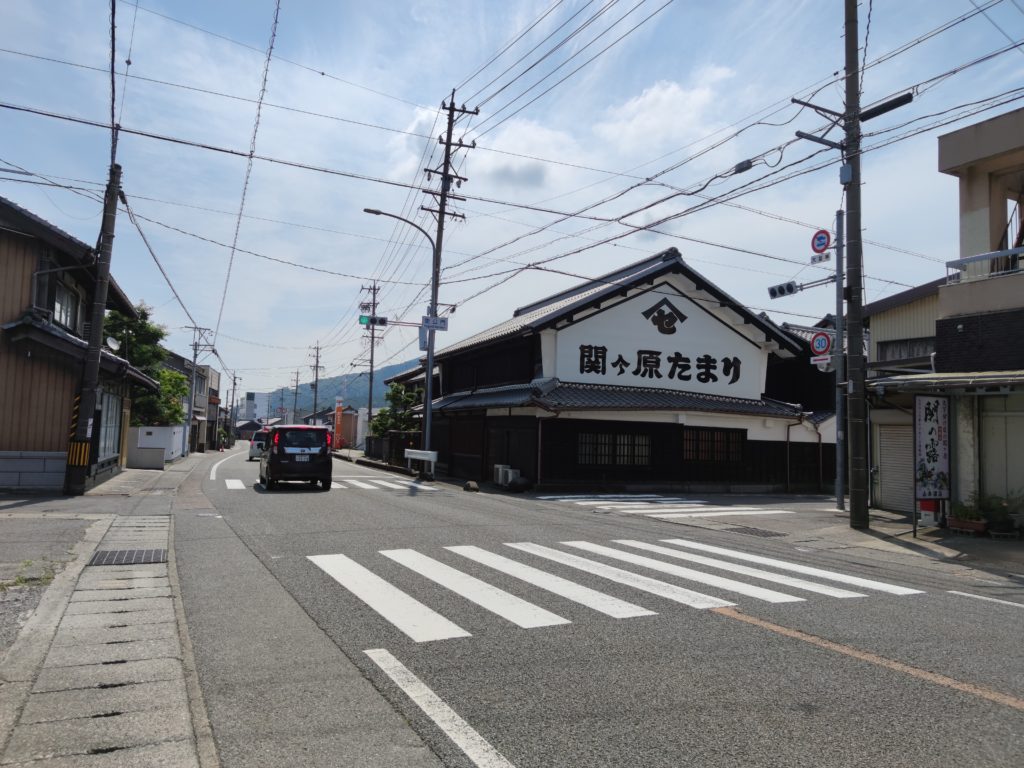
Walking along the street for a while, you will find a gas station on the north side of the national highway. Hidden behind it is Yoichimiya (Yoichi Shrine). The shrine is dedicated to Sekigahara Yoichi (Fujiwara Motokiyo), a pioneer of Sekigahara during the Genpei period (1615-1644). His descendants have carefully protected the shrine from generation to generation.
Shinshu Otaniha Houninji Temple. It is a beautifully maintained temple, but it does not seem to have any particular historical origin. However, it is said that a bowl that appears in a legend concerning Tsuzura-ike pond, which is located a little further south, is kept at Houninji.
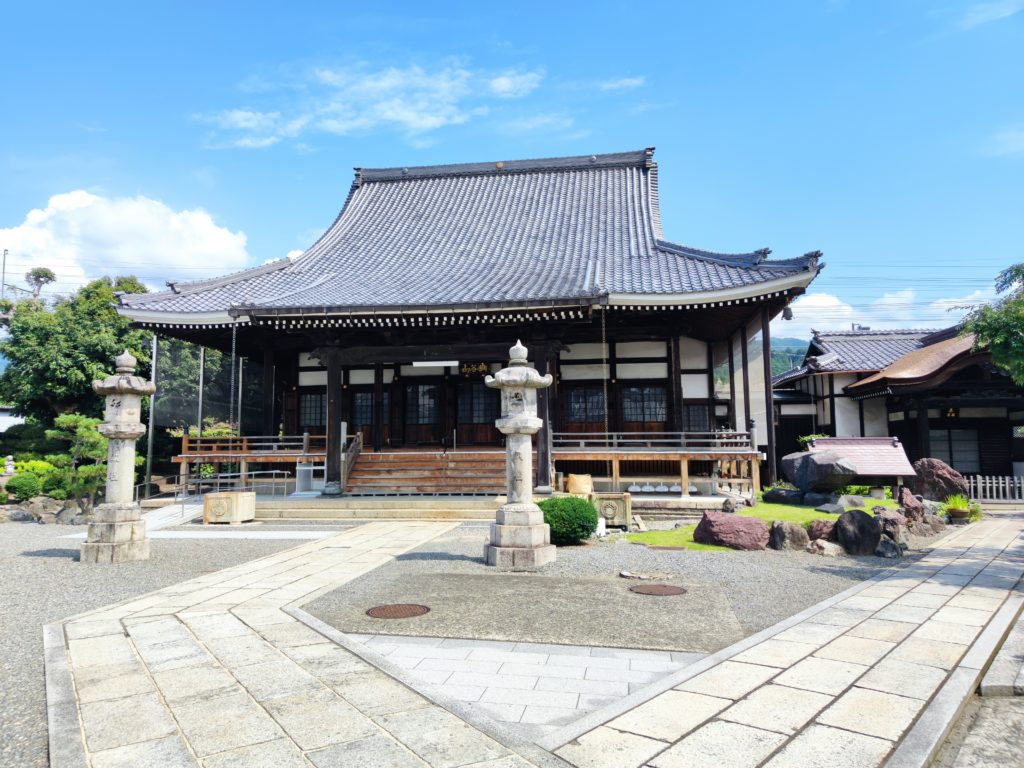
To the east of Honinji Temple is Wakamiya Hachiman Shrine. Emperor Ojin, Empress Jingu, and Emperor Nintoku are enshrined at the shrine. There is a record that the shrine was destroyed by fire during the Battle of Sekigahara. The date of its founding is not known. The Wakamiya Hachiman Shrine is said to house the flute that appears in the legend of Jukume-ike.

Tokugawa Ieyasu’s first camp
Walking east on the national highway for a while from Wakamiya Hachiman Shrine, the old Nakasendo and Route 21 finally diverge. Just after the fork is the Bato Kannon (Goddess of Mercy). In Japan, the Horse-headed Kannon is a guardian deity for travelers and horses, and is a common stone Buddha found along roadsides.
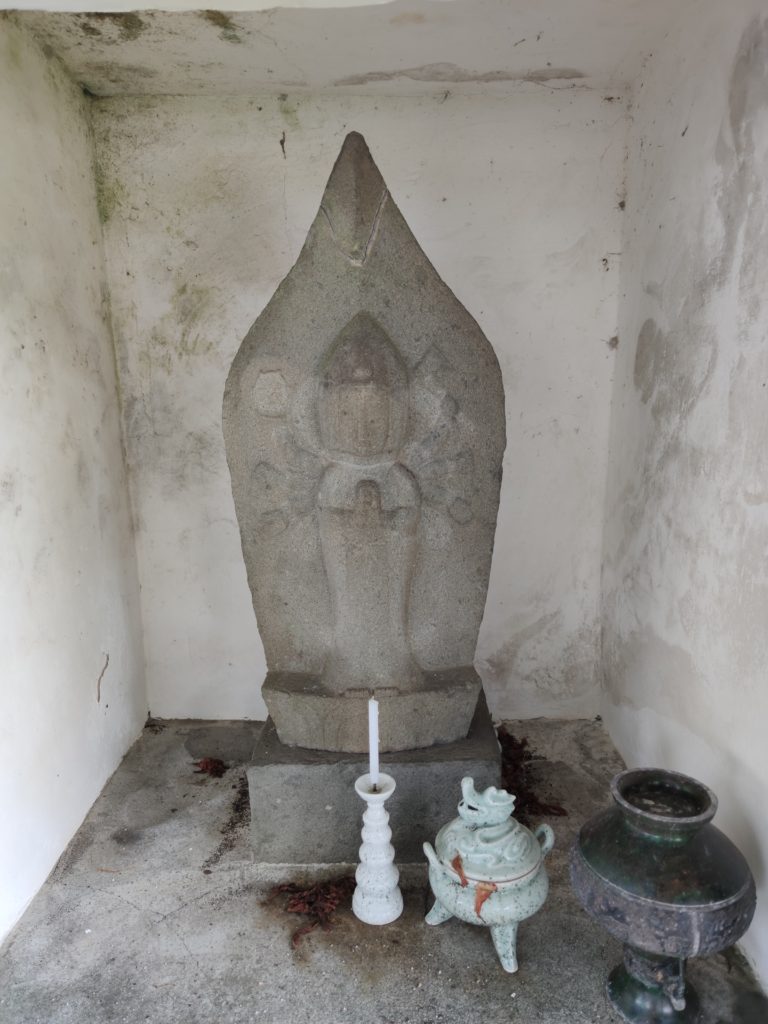
Walking along a slightly old-fashioned road with black pines planted on both sides, you will come to a traffic light. The old Nakasendo passes along the north side of the national highway from here, and once along the highway, we visited the site of Tokugawa Ieyasu’s first camp during the Battle of Sekigahara. This area is called Momokubariyama. The name “Momokubariyama” comes from the fact that during the Jinshin War, Prince Oama distributed wild peaches (momo) to his soldiers to inspire them to fight. It is said that Tokugawa Ieyasu also took a cue from this legend and set up camp on Momokubariyama.

After returning to the old road and continuing on for a while, a park-like space was created on the south side of the street, which is the Rokubu Jizo.
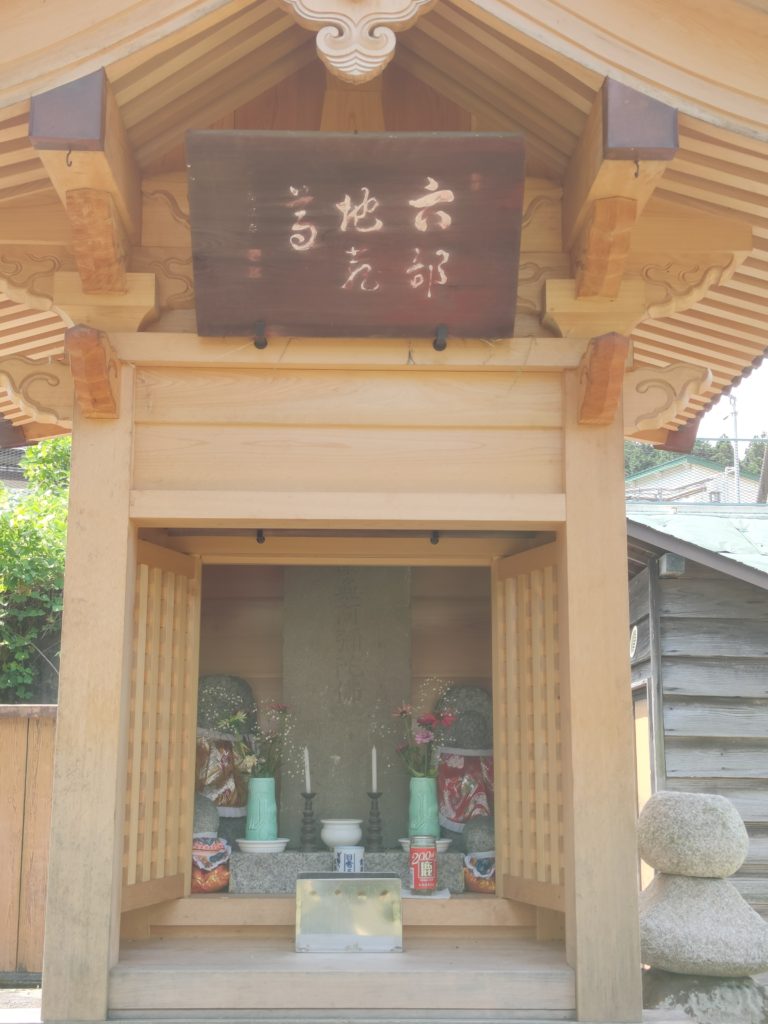
A little further on from Rokubu Jizo is the site of Yamauchi Kazutoyo’s camp. Kazutoyo Yamauchi was stationed at the eastern end of Sekigahara as a member of the Eastern Army. Though, he did not play a very active role in the Battle of Sekigahara. He was preparing for Mouri Hidemoto, Chosokabe Morichika, and others of the Western Army who were encamped at Nangusan near Tarui-juku.
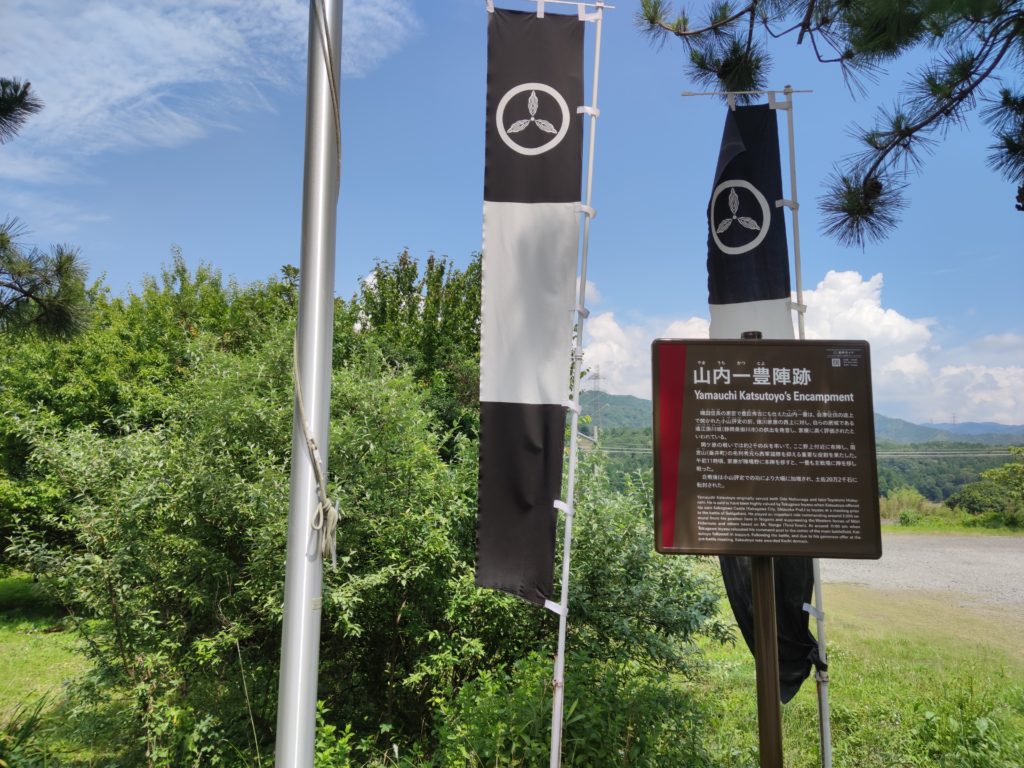
Nogami Village
After this, the Nakasendo road enters the village of Nogami. Old houses and old private homes that have a long history still remain here and there. This place may have a history longer than the Sekigahara-Tarui Nakasendo route itself.
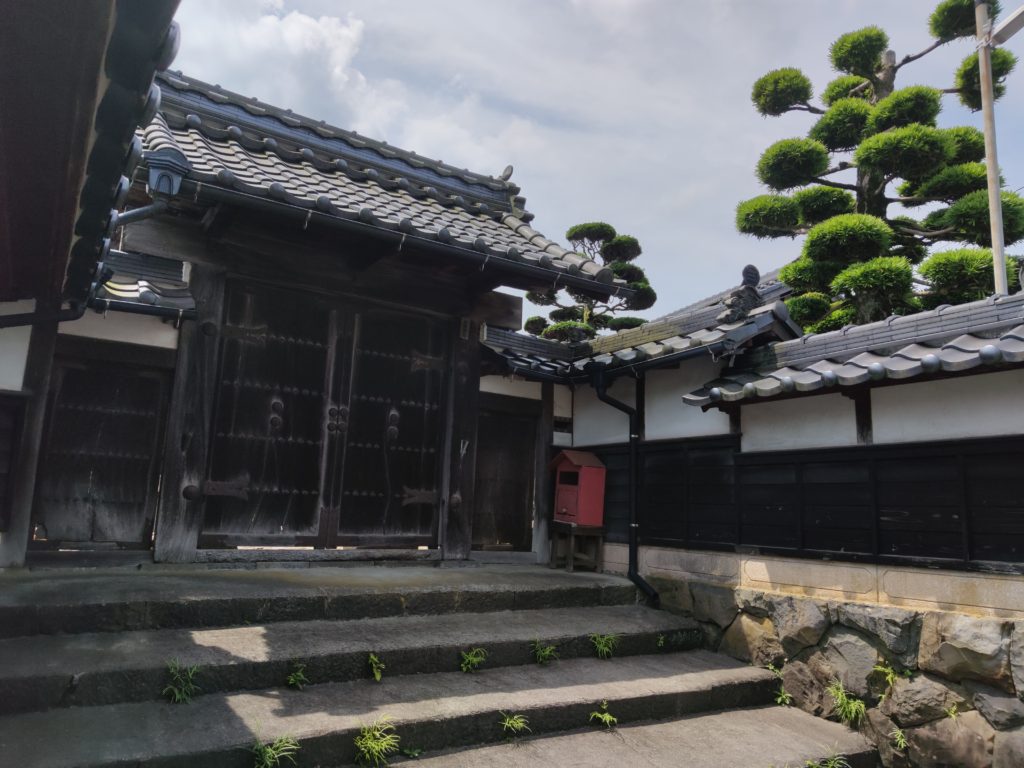
From the village of Nogami, we will make a few side trips. The first is Shinnenji Temple, located south of the narrow road and across Route 21. This temple is known for its Hanjo no Kannondou, a temple that Zeami wrote a song about. The temple itself was once burned down by Oda Nobunaga’s military fire, but was later rebuilt.
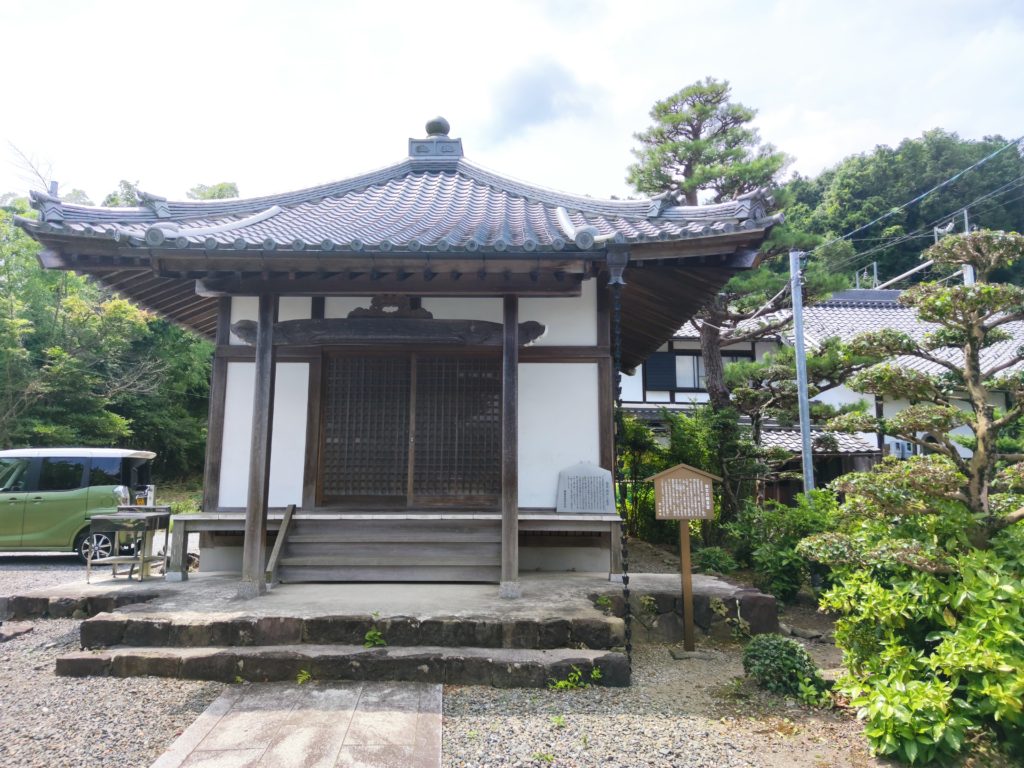
A cemetery can be found on the east side of Shinnenji Temple, along a narrow path toward the mountain. The collection of five-crested pagodas and old gravestones indicates that the area has been used as a cemetery for quite a long time.
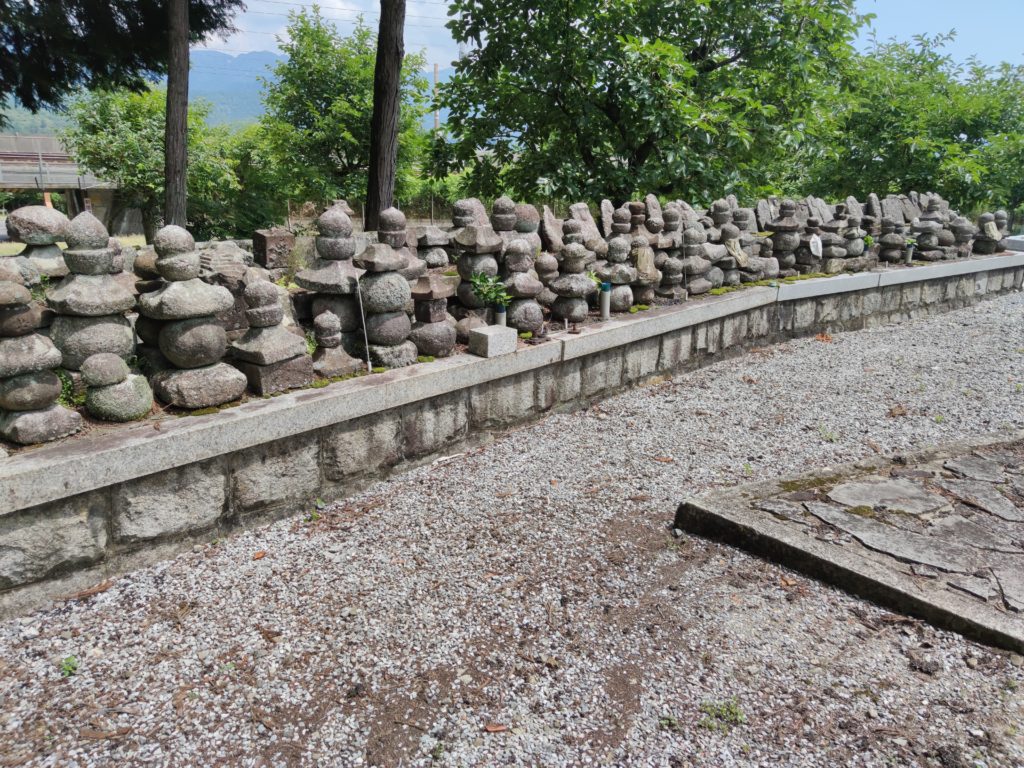
Nogami Angu Ato
Further up the mountain is the site of Nogami Angu Ato (野上行宮跡). It is said that during the Jinshin War, the future Emperor Temmu, Prince Oama built a temporary palace, Angu, in this area and used it as his headquarters.

Go back the way you came and cross the national road and take the narrow path to Nakasendo. There is a well called “seven wells” there. The village of Nogami used to be a sub-post town between Tarui-juku and Sekigahara-juku. The “Seven Wells of Nogami” along the road were popular among travelers in those days. And the wells have been restored and recreated as the Seven Wells you see today. The well is not good for drinking water now.
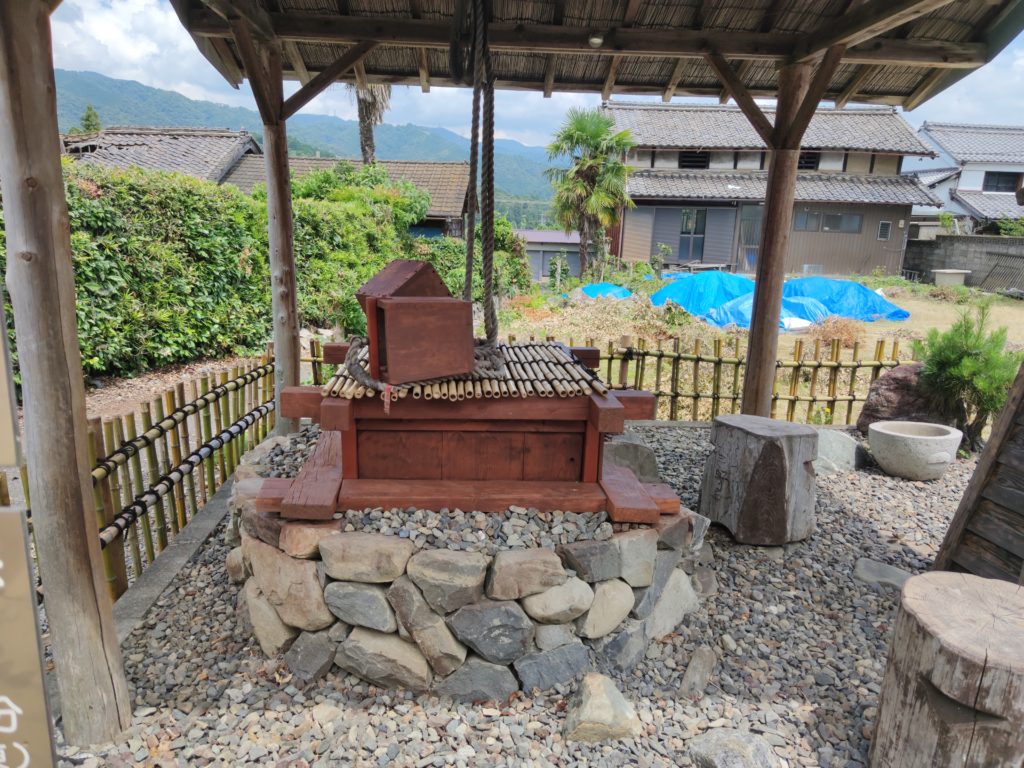
From the “Seven Wells of Nogami,” a narrow path winds its way northward through houses. Following this very old-looking path, by the side of the JR Tokaido Line, is Shamojizuka. This is the tomb of Taira Tadatsune, a military commander of the Heian period and grandson of Taira no Masakado. Taira Tadatsune was defeated in a rebellion and died of illness here in Nogami on his way to Kyoto. Before his death, the villagers took pity on him and offered him food on a rice scoop (shamoji), which he gladly ate. This was the time when the road was called Tozan Road, not Nakasendo Road.

Ibuki Jinja Shrine
Returning to the well and heading east on the road, we came to the torii gate of Ibuki Jinja Shrine. Ibuki Jinja Shrine is the second shrine of Mino. From the torii gate along the road to Ibuki Jinja is a distance of about 900 meters.
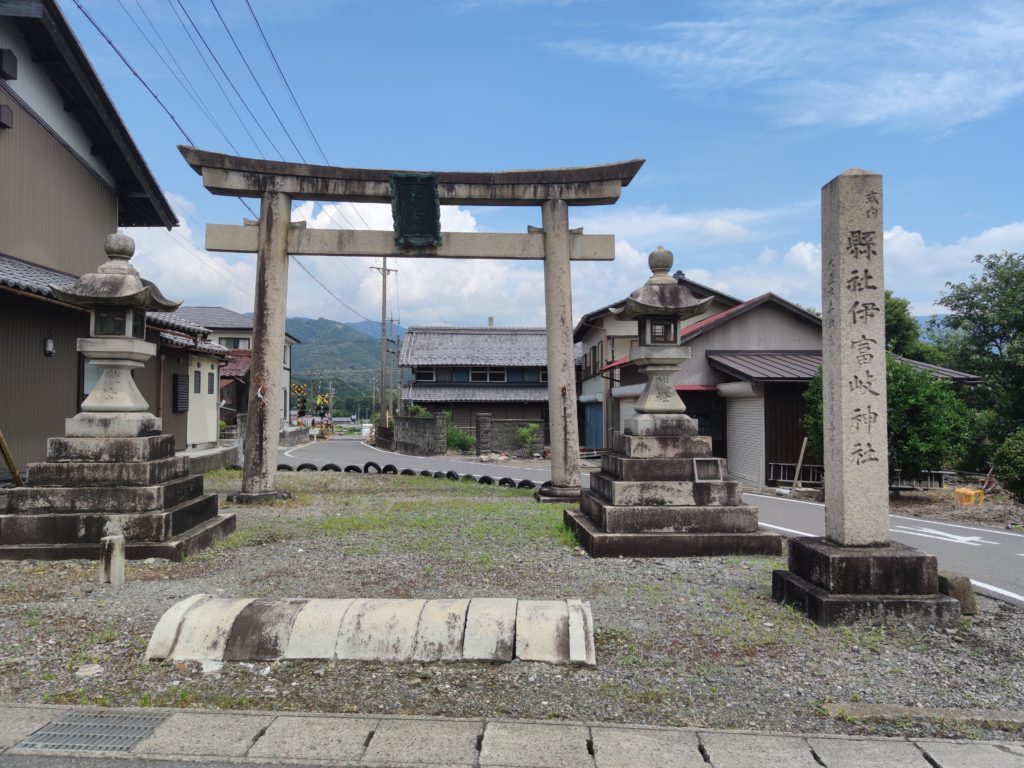
Tarui is home to Nangu Taisha, the first shrine of Mino Province, and Ibuki Shrine, the second shrine of Mino Province. In addition, the Mino Provincial Government was established a little further north. So it must have been an advanced and central area of Mino in ancient times.
Tarui
The Nakasendo continues on for a short section, but once there it passes south of Route 21. There, you will see Tarui Ichirizuka. Although only on one side, a splendid Ichirizuka still remains. Tarui Ichirizuka shows that Ichirizuka was surprisingly large. There are only two Ichirizuka along the Nakasendo Highway that have been designated as national historic sites, including this one.

The area around Tarui Ichirizuka was also where Yukinaga Asano took up a position during the Battle of Sekigahara. Yukinaga Asano was the eldest son of Nagamasa Asano, one of the five magistrates who served Hideyoshi. It is thought that Yukinaga was preparing for Mori Hidemoto and others who had set up camp at Nangusan.
The street crosses again to the north of Route 21. Eventually, you will see a sign for the western end of Tarui-juku around Atagosha shrine. This is the western end of the Tarui-juku. We have arrived at Tarui-juku.
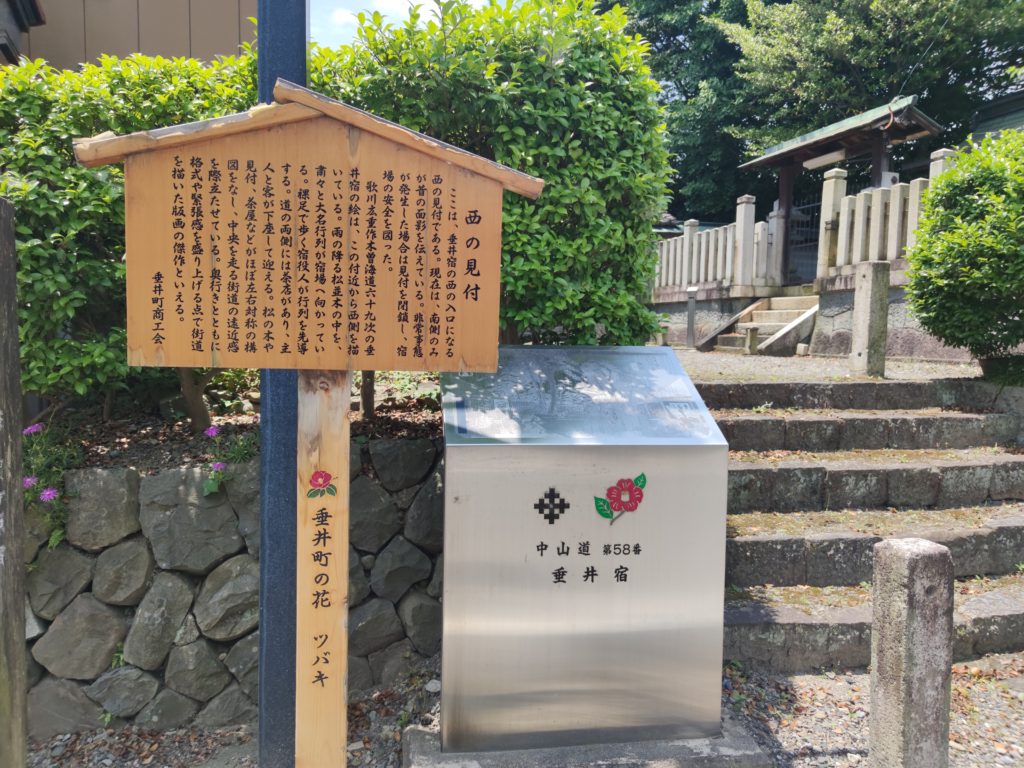
Comments
One response to “Sekigahara-juku – Tarui-juku hiking”
[…] Since the course from Mino Akasaka-juku to Tarui-juku can be walked in half a day, those who are confident in their legs can walk from Tarui-juku to Sekigahara-juku. […]